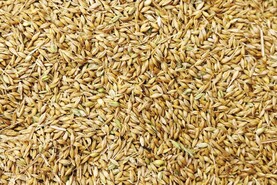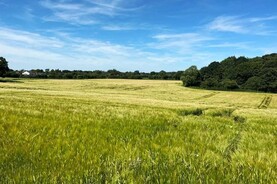Weather
The forecast for the coming days looks very showery and is not ideal for spraying.
That said, it looks like temperatures will rise which crops will welcome, as they have been struggling in the harsher weather of the past few weeks.
However, rain and warmer temperatures bring about an ideal situation for disease.
Fungicides
The final spray is due on wheat crops around now. Many crops are starting to flower and the final spray should be applied mid-flowering. This should be prothioconazole (Proline) or a mix of prothioconazole and tebuconazole at a full rate or very nearly a full rate. Use a mildewcide if needed.
Some spring barley crops are still due a T1 fungicide. Use a mix of an azole and a strobilurin. Crops are growing fast, and there is disease present in crops, so keep disease under control.
Other crops will be nearing their final spray, which should be applied when the awns are emerging for best control of ramularia.
Plant growth regulator
Warmer temperatures are due, and this will make it easier to put out growth regulator on crops that really need it like oats.
Some spring barley crops may benefit from an application, but this may be best limited to crops that are not stressed, and to varieties that have poor straw characteristics.
Remember to check what products are allowed if you’re selling straw for mushroom compost. Some malting barley cannot receive growth regulator either, so check with your agronomist.
Beans
The majority of spring beans were sown in late April and into May. Some of these crops are starting to flower. The first fungicide should be applied at the start of flowering. The main options for disease control are Signum or Elatus Era.
These products will target chocolate spot and brown rust. Check rates with your agronomist. Some farmers may be thinking of applying just one fungicide to beans. If you only plan on spraying a crop once, you will need to apply a strong rate.
You want to keep plants green and producing yield, but you also want to be able to harvest the crop relatively early. More fungicide is likely to keep the crop greener for longer.
However, there could be high disease pressure, which will require another fungicide. It is up to each individual farmer to decide. Consider field history, disease levels and yield potential when deciding whether or not to apply a second fungicide to the crop
Farm walk
On Thursday 20 June at 6.30pm the Irish Farmers Journal will hold a Footprint Farmers Walk, kindly hosted by Pádraig Connery in Clashmore, Co Waterford.
The walk will focus on growing crops that deliver a premium price, cover crops, grazing cover crops, importing slurry, time management and labour, as well as creating habitats for biodiversity on the farm. You can register for the farm walk here.






 This is a subscriber-only article
This is a subscriber-only article










SHARING OPTIONS: